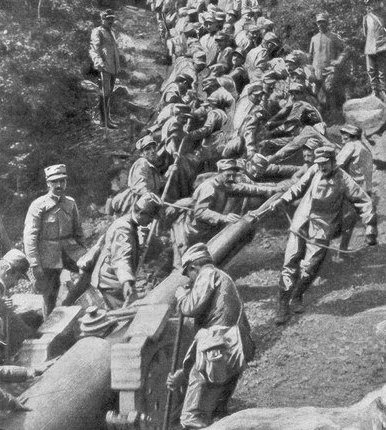
Anton Graf Bossi-Fedrigotti: Kaiserjäger - Ruhm und Ende.Österreich-Ungarns letzter Krieg 1914-1918 Band II Verlag der Militärwissenschftlichen Mitteilungen Wien 1931-1933.Ministero della Guerra Stato Maggiore centrale - Ufficio Storico.L'esercito italiano nella grande guerra (1915–1918) Volume I - IV / Roma: Ministerio della Guerra - Ufficio Storico, 1929–1974.Österreichisches Staatsarchiv/Kriegsarchiv Wien.^ a b "Le dodici Battaglie dell'Isonzo".The final Italian gains were minimal: in the northern sector, they conquered the heights over Bovec (Mount Kanin) in the southern sector, they conquered the westernmost ridges of the Kras plateau near Fogliano Redipuglia and Monfalcone.

On the Austrian-Hungarian side two commanders distinguished themselves: Major General Géza Lukachich von Somorja, commander of the 5th Mountain Brigade, who retook Redipuglia, and Major General Novak von Arienti who retook Hill 383 (overlooking Plave) with his 1st Mountain Brigade.Įarly in July the commander of the Austro-Hungarian Fifth Army, General Svetozar Boroević, received two reinforcement divisions, which put an end to the Italian efforts at breaking through the Austro-Hungarian lines. They made small footholds at Sagrado and Redipuglia on the Karst Plateau south of Gorizia but were unable to do much else. Italian troops, such as the Italian Re and Casale Brigades, were able to advance as far as the suburbs but could get no further and were driven back. The fighting at Gorizia consisted of street-by-street urban combat interspersed with artillery fire. In addition to the natural defenses of the river and mountains, bastions were created at Oslavia and Podgora. The heaviest fighting occurred around Gorizia. However, they were unable to dislodge the Austro-Hungarian troops from the high ground between Tolmino and the Isonzo, which would later form a launching off point for the Caporetto Offensive. They partially took Monte Nero (Monte Krn), took Monte Colowrat, and captured the heights around Plezzo.

The Austro-Hungarians had the advantage of fighting from uphill positions barricaded with barbed wire which were able to easily resist the Italian assault. The aim of the Italian Army was to drive the Austrians away from its defensive positions along the Isonzo and Soča rivers and on the nearby mountains and hopefully capture the port of Trieste.Īlthough the Italians enjoyed a 2:1 numeric superiority, their offensive failed because the Italian commander, Luigi Cadorna, employed frontal assaults after impressive (but short) artillery barrages. The First Battle of the Isonzo was fought between the armies of Italy and Austria-Hungary on the northeastern Italian Front in World War I, between 23 June and 7 July 1915. 2nd Piave River ( Taking of the Col Moschin).


 0 kommentar(er)
0 kommentar(er)
